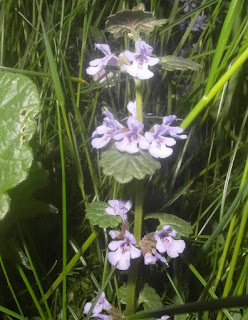Things appeared to be a bit more advanced in Rotterdam (it was 26 degrees Celsius!). Amongst the bloomers were Field woundwort (Stachys arvenis); Wood sage (Teucrium scorodonia); Greater celendine (Chelidonium majus); White dead nettle (Lamium album), Lilac (Syringa vulgaris) and Field pennycress (Thalpsi arvense). A Violet ground beetle (Carabus violaceus) scuttled along the pavement.
This blog may help people explore some of the 'hidden' issues involved in certain media treatments of environmental and scientific issues. Using personal digital images, it's also intended to emphasise seasonal (and other) changes in natural history of the Swansea (South Wales) area. The material should help participants in field-based modules and people generally interested in the natural world. The views are wholly those of the author.
Saturday, 14 May 2016
Seeing the Changes 1055
Things appeared to be a bit more advanced in Rotterdam (it was 26 degrees Celsius!). Amongst the bloomers were Field woundwort (Stachys arvenis); Wood sage (Teucrium scorodonia); Greater celendine (Chelidonium majus); White dead nettle (Lamium album), Lilac (Syringa vulgaris) and Field pennycress (Thalpsi arvense). A Violet ground beetle (Carabus violaceus) scuttled along the pavement.
Subscribe to:
Post Comments (Atom)
-
I n the UK and US, a pparently popular and successful vegan/vegetarian restaurants are reportedly closing or adding meat to their menus ( ...
-
Early ripening fruit may seem convenient but some folk think it confirms environmental stress. There's also a possibility th...








%20mating%20NWCW.jpg)


No comments:
Post a Comment